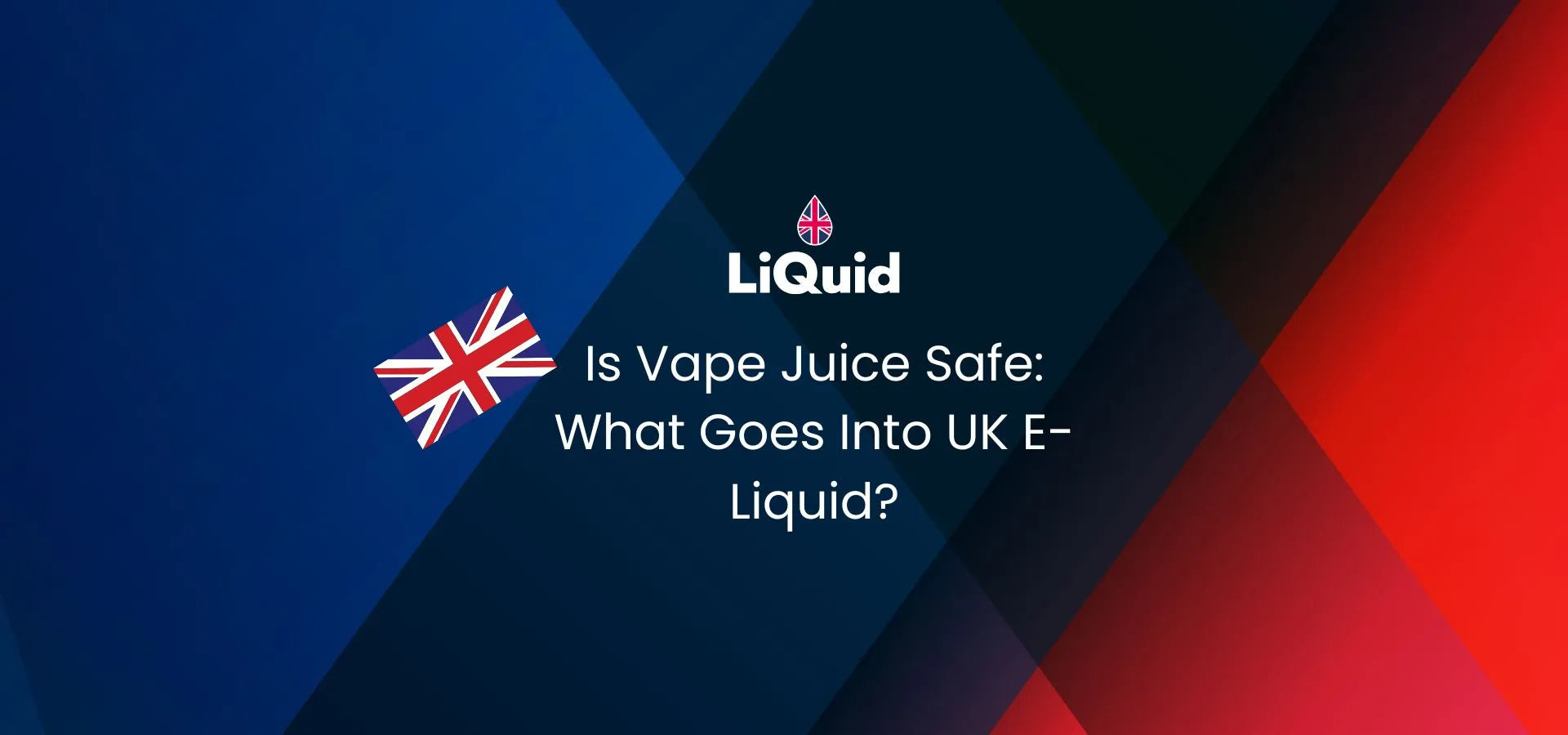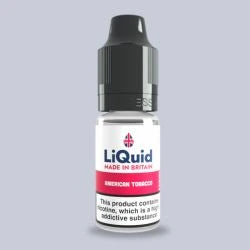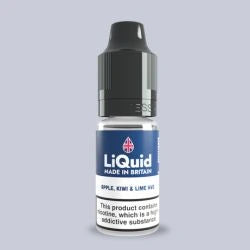Is Vape Juice Safe: What Goes Into UK E-Liquid?
Despite vaping being well established in the UK, public knowledge about general safety standards and even the ingredients that go into e-liquids is reportedly thin on the ground. That's why, in this guide, we will explore the ingredients that go into a bottle of safe and compliant UK-made vape juice, as well as the regulations and processes manufacturers like LiQuid follow to ensure you can buy with confidence.

What Ingredients Are Used To Make Safe Vape Juice?
A safe and compliant UK-made vape juice should only ever contain a combination of 4 different ingredients: propylene glycol (PG), vegetable glycerol (VG), nicotine & flavourings. All of which are subject to strict quality controls before they are approved for use in an e-liquid batch.
In rare cases, you may encounter e-liquids from other brands that also claim to use water in their recipes. We would consider this an outdated practice, and it is something we stopped adding to LiQuid products over 9 years ago because of the additional microbiological risks water presents, especially if products remain on the shelf for extended periods of time.
To ensure these ingredients are safe and of premium quality, manufacturers like LiQuid carefully audit suppliers to ensure they comply with expected standards. In addition, the raw materials themselves are subject to strict checks before being accepted for use in our vape juice, with total traceability of every single component from start to finish.
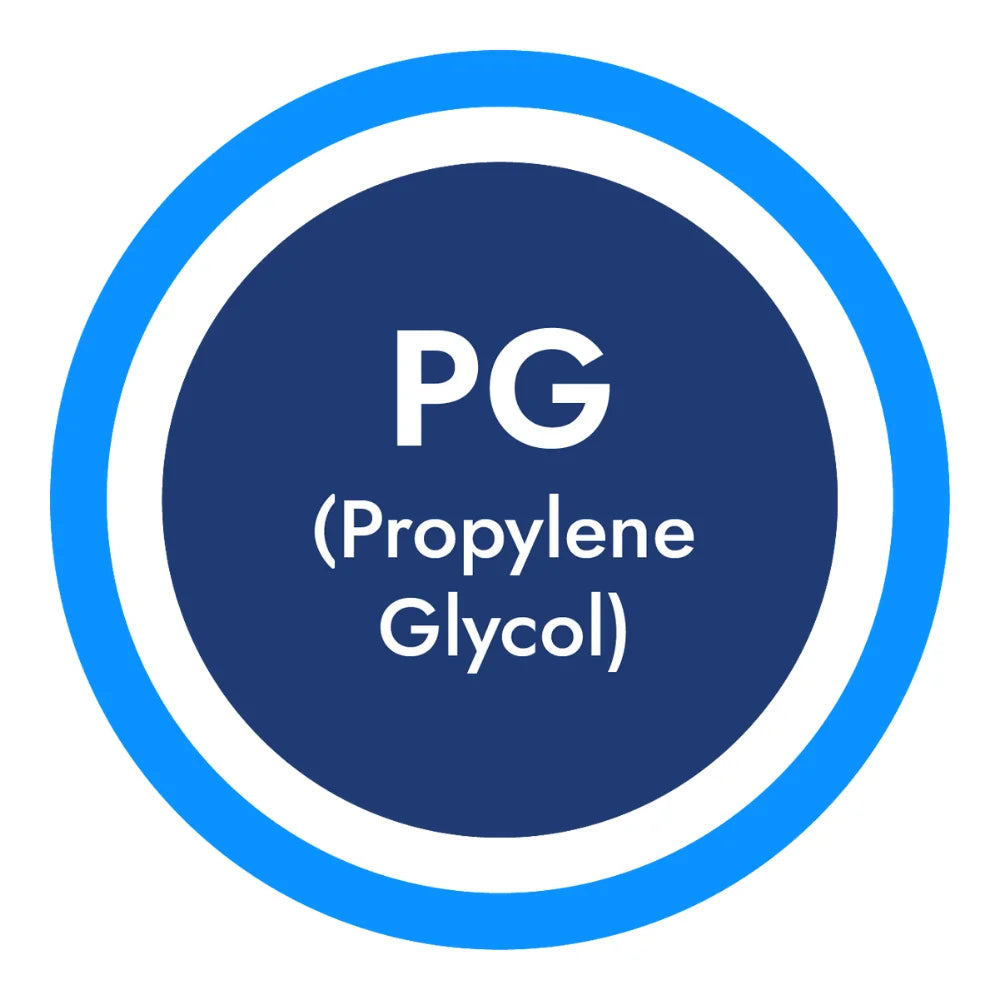
What Is PG In Vapes?
- PG is a clear, tasteless and colourless base material.
- PG is used in e-liquids as it is a very effective carrier for flavourings and nicotine.
- PG is thinner in consistency than VG and produces far less vapour.
- 50/50 vape liquids are made using a higher volume of PG, allowing them to accommodate higher nicotine strengths.
How Do We Know It Is Safe To Vape?
PG is a very widely used ingredient in many consumable items we all use every day, including beauty products and medicines like inhalers. It has been used for many years and is well understood to be safe for use in many products, including vapes.

What Is VG In Vapes?
- VG is a clear, slightly sweet and colourless base material.
- VG is perfect for e-liquids as it helps to create bigger clouds, which deliver more flavour.
- VG is very thick in its consistency and can produce massive vape clouds.
- Most e-liquids use a balanced combination of VG and PG, as VG is not an effective carrier agent by itself.
How Do We Know It Is Safe To Vape?
Like PG, VG has been used in a huge range of consumable products for many years and is well understood to be safe, even when vaped. VG can be found in many items, including dried foods, medicines, beauty products, and gels such as hand sanitiser.

What Are Flavourings In Vapes?
- Flavourings are what bring vape juice to life, and aside from nicotine, are what keep us coming back for more, with near limitless varieties on offer.
- They are usually suspended in a base consisting primarily of PG, which allows the flavourings to be properly blended alongside VG to create the finished product.
- They are classed as “food-grade” and are very similar, if not identical to those used in the catering industry, although at LiQuid, our flavour experts design concentrates specifically for vaping.
How Do We Know They Are Safe To Vape?
Vape flavourings are made using the same ingredients as those used in the food industry, meaning they are well understood to be safe and are thoroughly tested. All e-liquids must also undergo emissions testing before being released for sale, which ensures flavourings do not release any harmful by-products when heated in a vape kit.
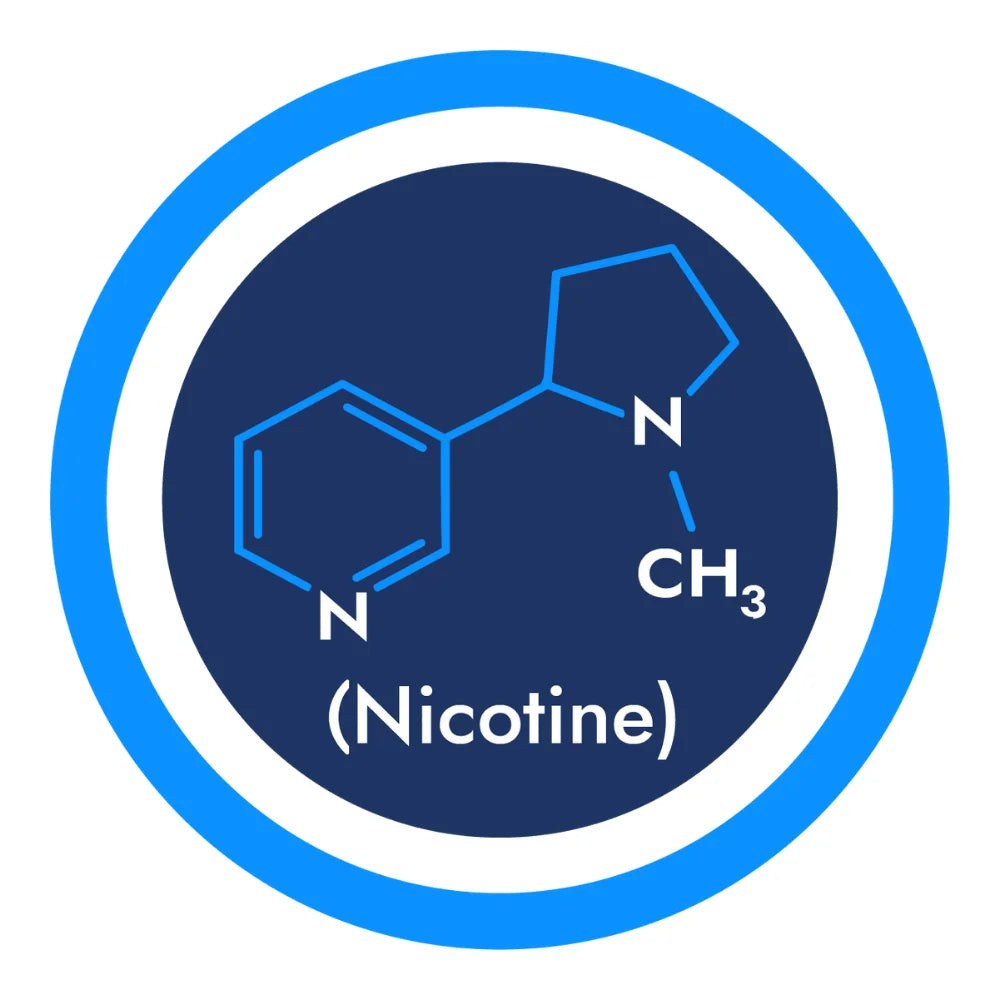
What Is Nicotine In Vapes?
- Nicotine is the 'active' ingredient in e-liquids that helps us manage cravings, but is also highly addictive.
- The most common type of nicotine used in e-liquids is called “freebase” as the nicotine is freely suspended in a base material like PG. It has a throat hit that many new vapers enjoy.
- Salt nicotine is used in nic salt e-liquids and is specially modified to have a neutral taste, with no throat hit even at high strengths. It delivers faster and longer-lasting satisfaction.
How Do We Know It Is Safe To Vape?
While addictive, nicotine in e-liquids does not carry the same risks as cigarettes because it is isolated from the thousands of harmful chemicals produced when burning tobacco.
Cancer Research UK says the following:
"Nicotine is the chemical that makes cigarettes addictive. But it is not responsible for the harmful effects of smoking, and nicotine does not cause cancer. People have safely used nicotine replacement therapy (NRT) to stop smoking for many years. Nicotine replacement therapy is prescribed by doctors or is available from pharmacies."
Is Vape Juice Safe To Consume?
Currently in the UK, experts including the NHS and Cancer Research UK, agree that vaping is significantly safer than smoking. The UK Government itself released a landmark study as far back as 2015, which declared vaping to be 95% less harmful than smoking cigarettes.
The caveat, however, is that it should not be considered risk-free and should only be used by adults as a method of tobacco harm reduction (quitting smoking).
The reason it cannot be considered risk free is, most obviously, because inhaling anything other than air puts undue stress on our bodies. Aside from this, while all current data paints vaping in a largely positive light vs smoking, longer term studies are still ongoing, and until more conclusions can be drawn from their data, we cannot say for certain what impact vaping may have over the course of 30 years for example.
One of the biggest reasons UK-made vape liquids are considered safe to consume is that they must comply with a range of strict health and safety regulations. These have been enforced since 2016/17, and are designed to ensure you can vape with confidence.
We will explore these in more detail below.
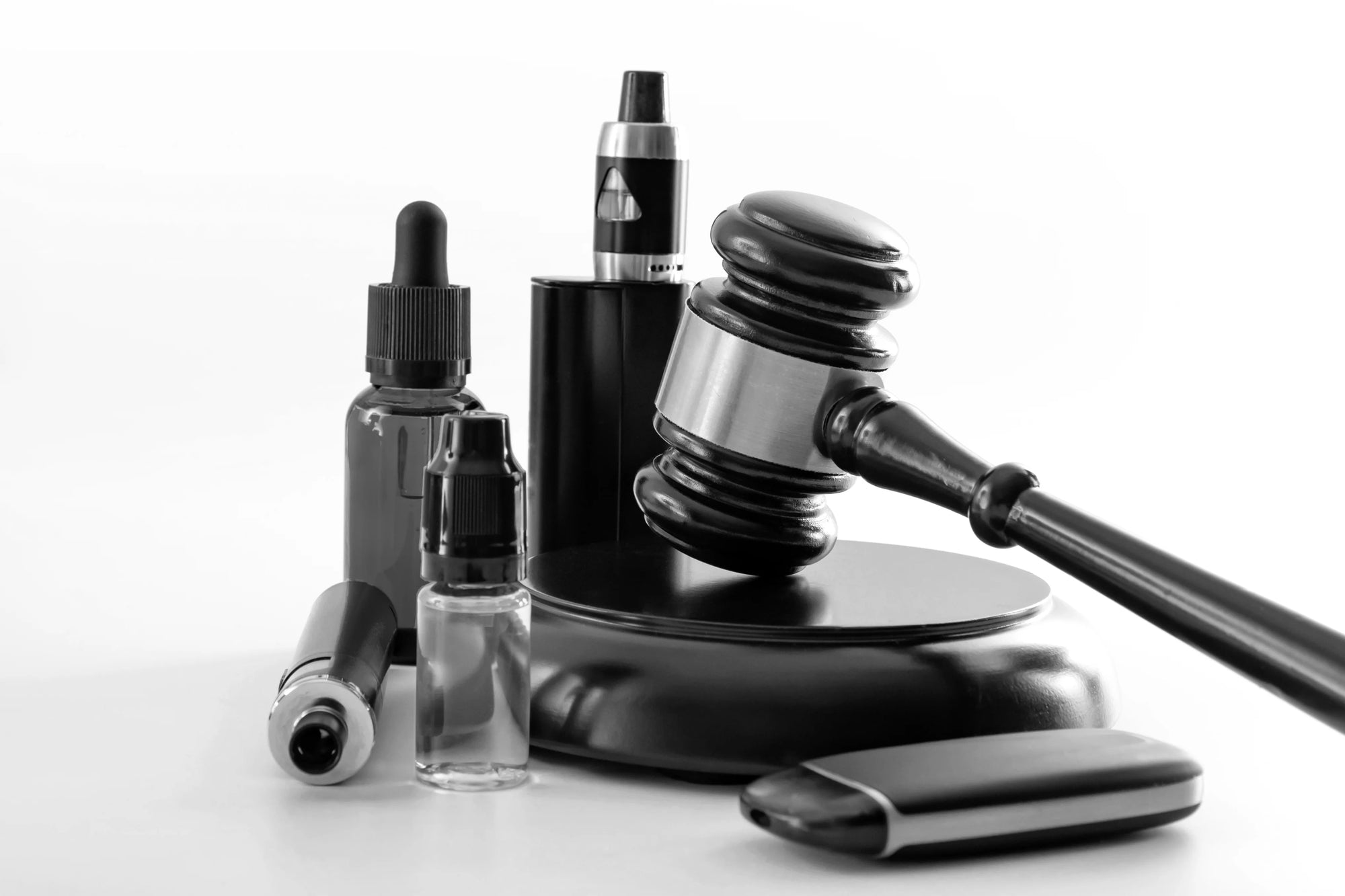
UK Vaping Regulations Explained
Regulations and compliance checks apply to all aspects of vaping, whether concerning e-liquids or vape devices. To be sold in the UK, all vaping products must comply with these regulations and pass the necessary compliance checks.
The current regulations governing the UK vaping industry are the Tobacco and Related Products Regulations (TRPR), which were first introduced in 2016 under a different name: the Tobacco Products Directive (TPD). Following Brexit, the TPD—previously favoured by the EU—was replaced by the TRPR, although the rules enforced remain largely the same.
You can see the specific TRPR regulations vaping companies like LiQuid must adhere to below.
Vape Juice Safety Tests & MHRA Approval Explained
Before they can be released for sale, e-liquids must undergo strict emissions tests to ensure no harmful by-products are produced when they are heated. These tests specifically measure and check for a range of carcinogens, which must be proven not to be present in the heated vapour or at least below official safe limits.
The data from these tests is then submitted, alongside a full breakdown of every single ingredient, to the Medicines and Healthcare Regulatory Agency (MHRA). This authority then reviews the data, and approves or rejects a product depending on whether they deem it safe for consumption.
All approved products are then added to a public database, allowing consumers to double-check if their chosen vape liquid is officially marked as safe and fit for sale.
Some manufacturers utilise 3rd part laboratories to carry out these safety tests, however, at LiQuid, we have developed our own fully accredited analytical labs, where our fully trained scientists carry out all the various safety tests every day. We will break down each stage of this process in more detail below, so you can see just how many steps are taken to ensure your vape juice is safe.

MHRA Approval Stage 1: Classification & Labelling
The first step in our compliance process is a thorough analysis of the ingredients used in the e-liquid. The main ingredients are always Propylene Glycol, Vegetable Glycerol and Nicotine, however our premium, UK-made flavourings are made up of tiny amounts of other ingredients, which also need to be accounted for.
Our Compliance Officers create a CLP breakdown, which involves calculating the exact amount of every single ingredient as well as checking their concentration. If any ingredient is present at a level that could cause an allergic reaction, the CLP breakdown provides the information needed so that the correct warnings are included on the packaging.

MHRA Approval Stage 2: Emissions Testing
The next step is an emissions test. This ensures that when the e-liquid is heated and turned to vapour it does not contain more than the established safe levels of carbonyl (carcinogenic) compounds. The tests are conducted by expert technicians in our analytical laboratory. First, an aerosol sample is collected from the vaporised e-liquid using specialised equipment called a ceti-8 smoke rig.
This sample is then passed through a special filtered cartridge, converting any carbonyls to more easily measured forms, and exposed to a solvent. This makes the carbonyls suitable for accurate analysis. The resulting solution is run through a High Pressure Liquid Chromatography (HPLC) machine, after which the carbonyls present in the sample can be compared to pre-set safety standards. The final concentration of each carbonyl is calculated and reported in units of μg/puff.

MHRA Approval Stage 3: The Portal
All the data and information on the new e-liquid is then submitted to the MHRA through an online platform called the EU-CEG portal - there is now a separate UK portal if the e-liquid is only to be sold domestically. This information includes the product name, manufacturer’s address, all ingredient values and details from the CLP breakdown, the emissions test results and more.
The submission is sent via e-Trustex and once approved, the e-liquid will appear on the MHRA website as a new, registered product. Should any of the data not comply with their strict safety standards, then the product will be rejected, preventing dangerous e-liquids from entering the market.

MHRA Approval Stage 4: Sale
When the new e-liquid has been fully tested, analysed, approved, and finally registered for sale, it can be mass-produced. Every batch of e-liquid produced at LiQuid undergoes further analysis to ensure consistent quality as we have detailed earlier in this blog.
This includes but is not limited to individual testing for nicotine concentration and organoleptic analysis of finished batch samples. Organoleptic analysis involves checking the visual appearance, aroma and taste of an e-liquid against standard samples made in controlled conditions. We retain safety data sheets for every single ingredient and finished e-liquid we process that are available on request.
While not the easiest to navigate for everyone, the MHRA database of approved vaping products (including LiQuid) is openly available for you to browse.
Conclusion: UK-Made Vape Juice Is The Safest In The World
After reading this guide, you should now have a better understanding of all the different steps we take as vaping manufacturers to ensure every drop of e-liquid is safe for consumption and compliant with all regulations.
In fact, the UK is widely regarded as world-leading in its approach to vape safety and regulation. No other country has such extensive research, testing, and active monitoring of product quality in the vaping sector. So much so, that our government's annual 'e-cigarette and vaping evidence reports' (which detail everything from the latest health data, to social aspects such as: use for quitting smoking, national vaping vs smoking rates, socio-economic data and more) are considered the global standard in vape research, and are used by policymakers and health authorities around the world to shape future vaping laws.
By buying your e-liquids from a brand like LiQuid, you can enjoy the peace of mind that comes from our transparency around to how are products are made, as well as the lengths we go to, above and beyond expected safety standards.
